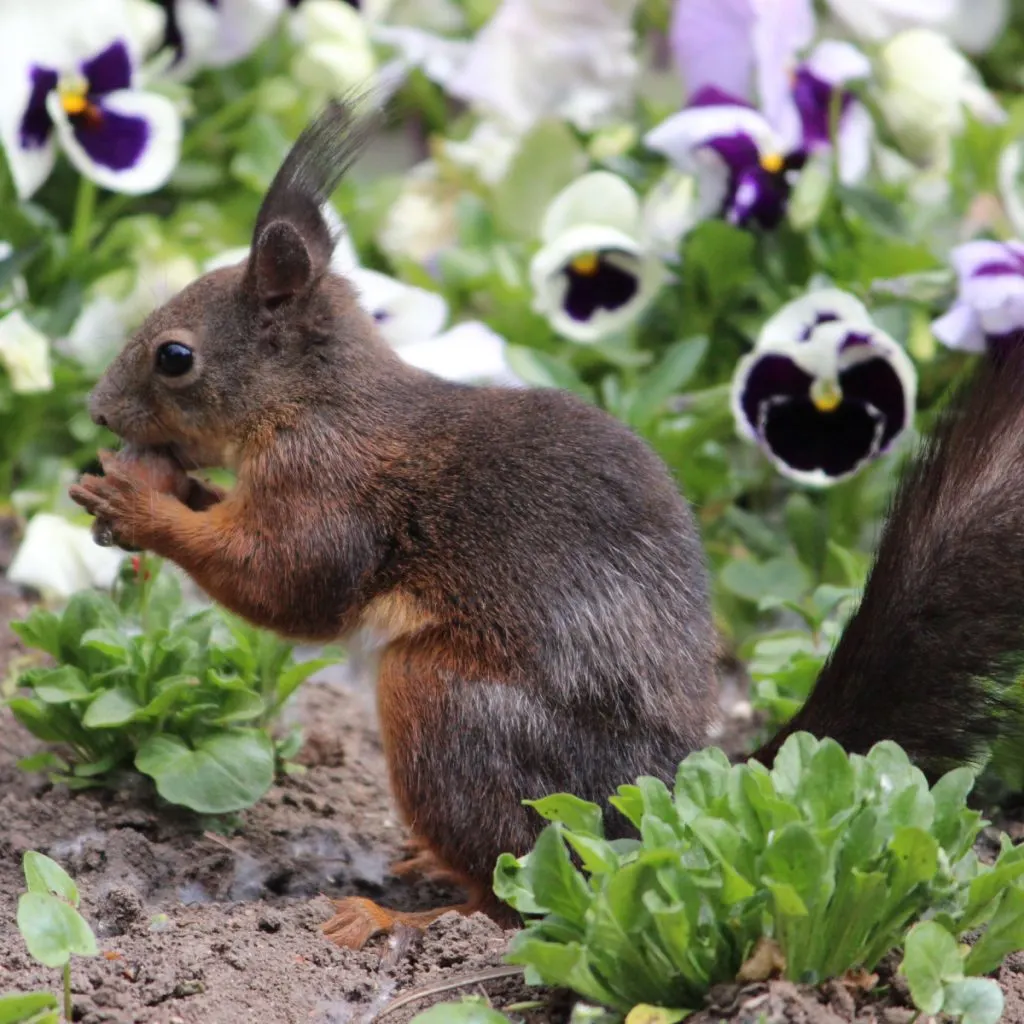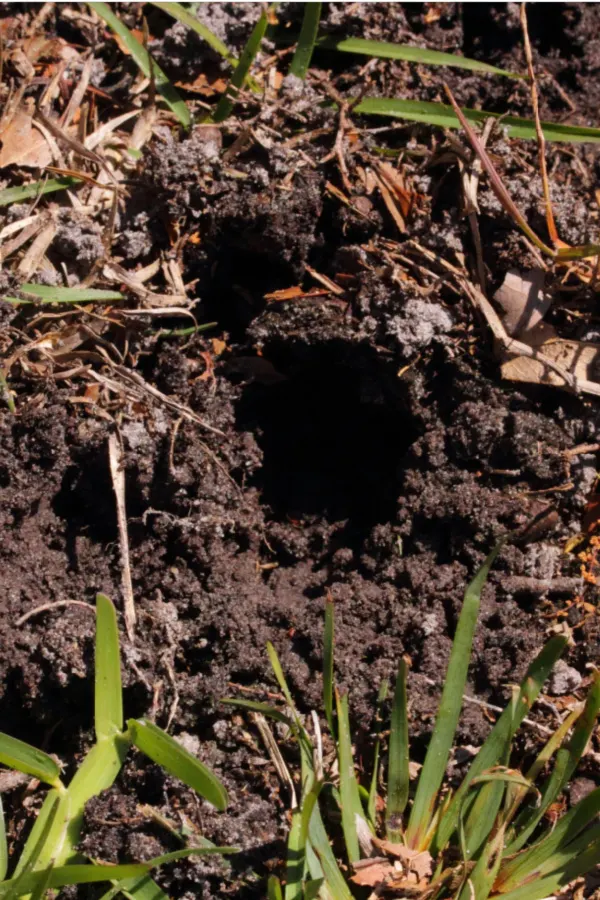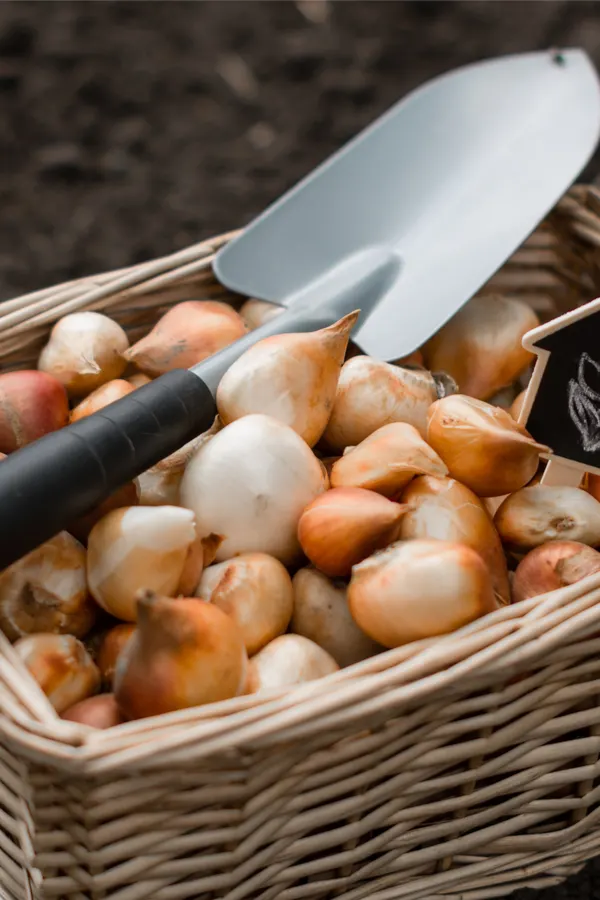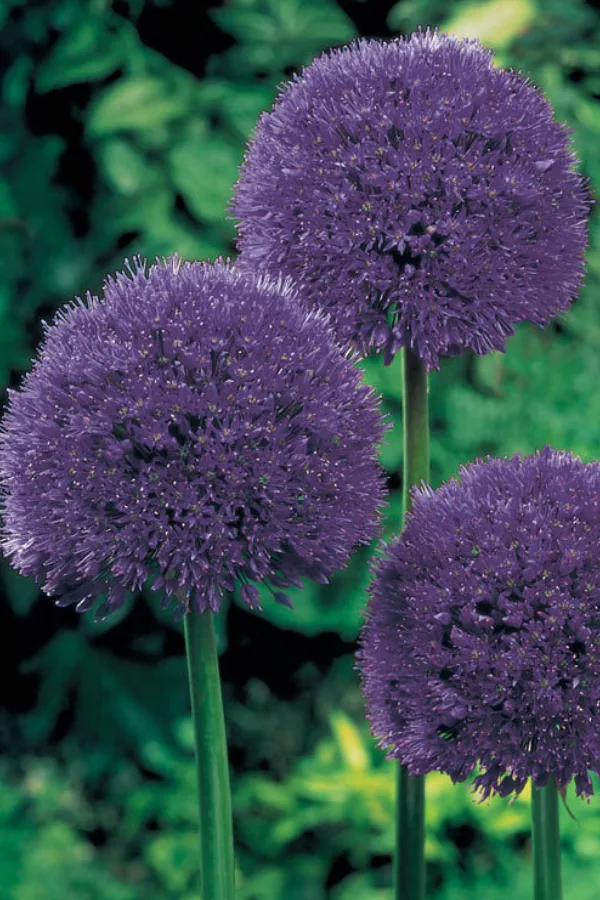Looking for a few tried and true methods for keeping all of your fall planted bulbs safe from being dug up by squirrels, chipmunks and other animals?
If you live in an area where frolicking chipmunks and squirrels abound, you know just how difficult it can be to protect your tulips, iris, crocus and a long list of other bulbs from being dug up and devoured. One thing is for sure, they can all but eliminate a fall planting with their foraging efforts!
Unfortunately, the fall planting of bulbs happens to coincide at exactly the same time squirrels and other animals are beginning to prepare for winter. And nothing makes a more delicious meal than easy to find bulbs.

Let’s face it, there is nothing more frustrating than spending an entire afternoon planting bulbs – only to have all of your efforts dug up the next day. The good news? There are actually a few simple but very effective tips and tricks to keep that from ever happening – and to ensure that your flowerbeds are loaded with spring color early next year!
4 Secrets To Keep Fall Bulbs Safe From Squirrels & Chipmunks!
Although all four of the tips below are highly effective at helping to keep your fall bulbs safe, there are a few things you can do right from the start that can deter squirrels and chipmunks from unearthing newly planted bulbs.
For starters, always tamp down the soil as soon as you plant and cover with mulch. Bare soil is an open invitation for all kinds of animals to dig for treasure. And if it’s loose, the scent of the bulbs is far easier for them to detect.
In addition, although fertilizing can help bulb growth and flowering, it also attracts pests. If you live in an area where squirrels and chipmunks are prevalent, it is best to skip adding bone meal or fertilizer. If you do need to fertilize, add it at the very bottom of the planting hole only. To make it even more safe, be sure to cover the soil with mulch as well.
Now that we have covered the basics in protecting bulbs, here is a look at four effective protection methods, starting with by far the best and most effective of all – encasing your bulbs in protective cages or screens.

#1 Using Bulb Baskets, Cages & Hardware Cloth – How To Keep Fall Bulbs Safe From Squirrels & Chipmunks!
When it comes to the ultimate form of protecting your tulip bulbs, nothing works better than using bulb baskets, cages or hardware cloth coverings. Cages are nothing more than a protective casing around your bulbs that keeps small critters from getting at them. But they are incredibly effective!
The bulbs sprout and then grow through the opening in the cages or baskets. The plant grows just fine, but squirrels and chipmunks simply can’t get to the bulb. Affiliate Link: Plant Baskets – 1 Quart, Pack of 4 – Protect Plants, Trees, Flowers and Bulbs from Voles, Gophers and Moles
Cages can be a bit more cumbersome to plant and bury. But in terms of effectiveness, they are pretty much impenetrable. When correctly used, it makes getting at the bulbs impossible. They are the perfect solution for those who have massive squirrel or chipmunk populations around them.
You can purchase cages and baskets, or make them at home from hardware cloth. To create your own, cut the cloth with wire cutters and bend into a cage to surround the bulb. You can make single bulb cages or make them larger to accommodate multiple bulbs. If making your own, always use hardware cloth with less than 3/4 inch openings.

#2 Cover Bulbs With Hardware Cloth – How To Keep Fall Bulbs Safe From Squirrels & Chipmunks!
Another effective way to protect bulbs is to simply cover the bulbs with a large piece of hardware cloth. This is highly effective for large planting areas of hundreds of bulbs where individual baskets are simply not practical.
To use, just dig an area out, plant your bulbs and then cover on top of the hardware cloth. When the squirrels or chipmunks dig down and encounter the wire, they quickly give up. Affiliate Product Link: YARDGARD 309312A Cage Wire Fencing, 24 Inches x 25 Ft, Galvanized
When using this method, you do need to make sure to cover a few inches beyond the bulbs. If not, squirrels can dig from the side and get under the wire to get at the bulbs.
#3 Planting Bulbs With Gravel – How To Keep Fall Bulbs Safe From Squirrels & Chipmunks!
Squirrels and chipmunks are not fond of gravel. Especially when they have to dig through it to get to a food source. And that can be used to your advantage when planting tulip bulbs.

One of the best ways to keep your bulbs safe without a lot of extra hassle is to plant them with pea gravel. Simply dig your holes as usual. Then, surround the bulbs with a half inch or so of gravel. All you need to do is then fill the remainder of the hole with dirt, tamp down, and mulch.
When the squirrels and chipmunks dig down into the soil and encounter the rock, it is usually not worth their time and effort. Best of all, the rounded form of pea gravel also doesn’t harm the bulbs.
In addition to protecting against damage, the rock has an added benefit. Tulip bulbs can often suffer from rot when they are in the ground during the cool, wet fall season. But the gravel helps to provide instant drainage and helps keep rot at bay.
In addition to using rock in the holes, many gardeners also cover the soil on top with rock as a mulch as an added deterrent.
#4 Companion Planting – How To Keep Fall Bulbs Safe From Squirrels & Chipmunks!
Last but not least, another effective way to keep pests from digging up your bulbs is by planting them with or near plants that both squirrels and chipmunks simply don’t like.

Much like companion planting in the garden that can deter insects and animals, you can plant your bulbs near other plants that squirrels and chipmunks don’t like. And some of those are actually other fall bulbs!
At the top of the list are allium, daffodils and hyacinth bulbs. Not only are these three choices great bulbs for spring color, you can plant at the same time in the fall with tulip and iris bulbs that squirrels and chipmunks love.
Not only will it give you protection, but even more spring color. Here is to protecting your fall planted bulbs – and to keeping squirrels and chipmunks at bay! For more on squirrel protection, check out our article: How To Keep Squirrels Away From Bird Feeders.
This Is My Garden
Follow Our Facebook Page For Great Gardening Tips And Advice! This Is My Garden Facebook Page
This Is My Garden is a garden website created by gardeners, for gardeners. Jim and Mary Competti have been writing gardening, DIY and recipe articles and books and speaking for over 15 years from their 46 acre Ohio farm. They publish three articles every week, 52 weeks a year. Sign up today to follow via email, or follow along!
